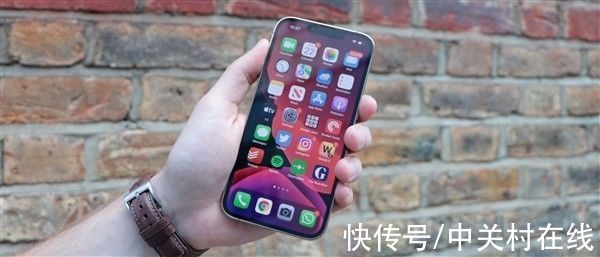CoreData|CoreData 从入门到精通(五)CoreData 和 TableView 结合
我们知道 CoreData 里存储的是具有相同结构的一系列数据的集合,TableView 正好是用列表来展示一系列具有相同结构的数据集合的。所以,要是 CoreData 和 TableView 能结合起来,CoreData 查询出来的数据能同步地显示在 TableView 上,更好一点就是 CoreData 里的改动也能同步到 TableView 上,那就再好不过了。可喜的是,确实有这样一个 API,那就是 NSFetchedResultsController,相信不少人对这个东西都不陌生,因为用 Xcode 创建带有 CoreData 的 Master-Detail 模板工程时,就是用这个接口来实现的。这篇文章也主要是围绕着模板工程中的代码进行介绍,如果你对这块比较熟悉的话,不妨直接去看模板里的代码;如果你是第一次听说这个 API,不妨继续看下去,相信会对你有帮助的。
创建一个简单的 TableView 布局
在使用 CoreData 之前,首先我们来创建一个简单的 TableView 布局,对大多数人来说,这应该没什么难度,所以下面就直接贴代码,不会对代码进行解释了。
这里我们用 Storyboard 创建一个 TableViewController,首先配置 tableView 的 dataSource
- (void)viewDidLoad {
[super viewDidLoad];
// 添加编辑和插入按钮
self.navigationItem.leftBarButtonItem = self.editButtonItem;
self.navigationItem.rightBarButtonItem = [self addBarButtonItem];
}#pragma mark - Table view data source- (NSInteger)numberOfSectionsInTableView:(UITableView *)tableView {return 1;
}- (NSInteger)tableView:(UITableView *)tableView numberOfRowsInSection:(NSInteger)section {return 100;
}- (UITableViewCell *)tableView:(UITableView *)tableView cellForRowAtIndexPath:(NSIndexPath *)indexPath {UITableViewCell *cell = [tableView dequeueReusableCellWithIdentifier:kCellIdentifier forIndexPath:indexPath];
[self configureCell:cell atIndexPath:indexPath];
return cell;
}- (BOOL)tableView:(UITableView *)tableView canEditRowAtIndexPath:(NSIndexPath *)indexPath {
return YES;
}- (void)tableView:(UITableView *)tableView commitEditingStyle:(UITableViewCellEditingStyle)editingStyle forRowAtIndexPath:(NSIndexPath *)indexPath {
if (editingStyle == UITableViewCellEditingStyleDelete) {
// deletions
}
}
这是一个非常简单的 TableView,现在只能显示一些随机生成的数据。接下来我们来实现
NSFetchedResultsController 来和 CoreData 中的数据对接,CoreData 相关的代码,就直接用之前文章里创建的 Student 实体。如果有不了解的朋友,可以先去看一下这篇文章 CoreData 从入门到精通 (一) 数据模型 + CoreData 栈的创建。初始化 NSFetchedResultsController 先来看一下
NSFetchedResultsController 的初始化代码:#pragma mark - NSFetchedResultsController- (NSFetchedResultsController *)fetchedResultsController {
if (!_fetchedResultsController) {
NSFetchRequest *fetchRequest = [Student fetchRequest];
fetchRequest.sortDescriptors = @[[NSSortDescriptor sortDescriptorWithKey:@"studentId" ascending:YES]];
fetchRequest.fetchBatchSize = 50;
fetchRequest.fetchLimit = 200;
NSFetchedResultsController *fetchController = [[NSFetchedResultsController alloc] initWithFetchRequest:fetchRequest managedObjectContext:self.context sectionNameKeyPath:@"studentAge" cacheName:@"StudentTable"];
fetchController.delegate = self;
NSError *error;
[fetchController performFetch:&error];
[[[Logger alloc] init] dealWithError:error whenFail:@"fetch failed" whenSuccess:@"fetch success"];
_fetchedResultsController = fetchController;
}
return _fetchedResultsController;
}
创建
fetchedResultsController 需要指定一个 fetchRequest,这很好理解,因为 fetchedResultsController 也需要查询 CoreData 数据库里的数据,需要注意的是,指定的这个 fetchRequest 必须要设置 sortDescriptors 也就是排序规则这个属性,不设置直接运行的话,程序是会直接崩溃的,这是因为 fetchedResultsController 需要根据这个排序规则来规定数据该以什么顺序显示到 tableView 上,而且这个 fetchRequest 指定之后就不可以再修改了;
文章图片
fetchRequest-w600
context 就是上下文的对象;sectionNameKeyPath 可以指定一个 keypath 来为 tableView 生成不同的 section,指定成 nil 的话,就只生成一个 section;
文章图片
sectionNameKeyPath-w600
cacheName 用来指定一个缓存的名字,加载好的数据会缓存到这样一个私有的文件夹里,这样可以避免过多的从 CoreData 数据库里查询以及计算的操作。
文章图片
cacheName-w600
除此之外,
fetchLimit 和 fetchBatchSize 这两个属性也需要注意一下,fetchLimit 之前讲过是指定获取数据的上限数量,而 fetchBatchSize 是分批查询的数据量大小。因为一次性查询出过多的数据会消耗不少的内存,所以这里推荐给这两个属性设置一个合理的值;指定的泛型 Student 就是 fetchRequest 查询的数据类型。这些都配置之后调用 performFetch: 方法就可以执行查询操作了。返回的数据保存在 fetchedResultsController 的 fetchedObjects 属性里,不过我们一般不会直接用到它。fetchedResultsController 绑定到 TableView 下面来修改 tableView 的
dataSource 的方法将查询出来的数据集合和 TableView 绑定。- (NSInteger)numberOfSectionsInTableView:(UITableView *)tableView {
// sections 是一个 NSFetchedResultsSectionInfo 协议类型的数组,保存着所有 section 的信息
return self.fetchedResultsController.sections.count;
}- (NSInteger)tableView:(UITableView *)tableView numberOfRowsInSection:(NSInteger)section {
// sectionInfo 里的 numberOfObjects 属性表示对应 section 里的结果数量
id sectionInfo = self.fetchedResultsController.sections[section];
return sectionInfo.numberOfObjects;
}- (UITableViewCell *)tableView:(UITableView *)tableView cellForRowAtIndexPath:(NSIndexPath *)indexPath {UITableViewCell *cell = [tableView dequeueReusableCellWithIdentifier:kCellIdentifier forIndexPath:indexPath];
// 通过这个方法可以直接获取到对应 indexPath 的实体类对象
Student *student = [self.fetchedResultsController objectAtIndexPath:indexPath];
[self configureCell:cell withStudent:student];
return cell;
}
// 修改后的configureCell 方法
- (void)configureCell:(UITableViewCell *)cell withStudent:(Student *)student {
cell.textLabel.text = [NSString stringWithFormat:@"%d:%@ age:%d", student.studentId, student.studentName, student.studentAge];
}
实现增删改查的同步更新 上一步里我们实现了把
fetchedResultsController 里的数据绑定到 TableView 上,但还没完成同步更新的实现,例如 CoreData 数据库里新插入了数据,TableView 这时也可以自动更新。实现这个功能,只需要实现 fetchedResultsController 的 delegate 就可以了。NSFetchedResultsControllerDelegate 里有一个 NSFetchedResultsChangeType 枚举类型,其中的四个成员分别对应 CoreData 里的增删改查:typedef NS_ENUM(NSUInteger, NSFetchedResultsChangeType) {
NSFetchedResultsChangeInsert = 1,
NSFetchedResultsChangeDelete = 2,
NSFetchedResultsChangeMove = 3,
NSFetchedResultsChangeUpdate = 4
}
delegate 里共有五个协议方法:// 对应 indexPath 的数据发生变化时会回调这个方法
@optional
- (void)controller:(NSFetchedResultsController *)controller didChangeObject:(id)anObject atIndexPath:(nullable NSIndexPath *)indexPath forChangeType:(NSFetchedResultsChangeType)type newIndexPath:(nullable NSIndexPath *)newIndexPath;
// section 发生变化时会回调这个方法
@optional
- (void)controller:(NSFetchedResultsController *)controller didChangeSection:(id )sectionInfo atIndex:(NSUInteger)sectionIndex forChangeType:(NSFetchedResultsChangeType)type;
// 数据内容将要发生变化时会回调
@optional
- (void)controllerWillChangeContent:(NSFetchedResultsController *)controller;
// 数据内容发生变化之后会回调
@optional
- (void)controllerDidChangeContent:(NSFetchedResultsController *)controller;
// 返回对应 section 的标题
@optional
- (nullable NSString *)controller:(NSFetchedResultsController *)controller sectionIndexTitleForSectionName:(NSString *)sectionName;@end
想要实现 tableView 的数据同步更新可以按下面的代码来实现这几个 delegate 方法:
#pragma mark - NSFetchedResultsControllerDelegate
- (void)controllerWillChangeContent:(NSFetchedResultsController *)controller {
// 在这里调用 beginUpdates 通知 tableView 开始更新,注意要和 endUpdates 联用
[self.tableView beginUpdates];
}- (void)controller:(NSFetchedResultsController *)controller didChangeObject:(id)anObject atIndexPath:(NSIndexPath *)indexPath forChangeType:(NSFetchedResultsChangeType)type newIndexPath:(NSIndexPath *)newIndexPath {
// beginUpdates 之后,这个方法会调用,根据不同类型,来对tableView进行操作,注意什么时候该用 indexPath,什么时候用 newIndexPath.
switch (type) {
case NSFetchedResultsChangeInsert:
[self.tableView insertRowsAtIndexPaths:@[newIndexPath] withRowAnimation:UITableViewRowAnimationAutomatic];
break;
case NSFetchedResultsChangeMove:
[self.tableView moveRowAtIndexPath:indexPath toIndexPath:newIndexPath];
break;
case NSFetchedResultsChangeUpdate:
[self configureCell:[self.tableView cellForRowAtIndexPath:indexPath] withStudent:anObject];
break;
case NSFetchedResultsChangeDelete:
[self.tableView deleteRowsAtIndexPaths:@[indexPath] withRowAnimation:UITableViewRowAnimationAutomatic];
break;
}}- (void)controllerDidChangeContent:(NSFetchedResultsController *)controller {
// 更新完后会回调这里,调用 tableView 的 endUpdates.
[self.tableView endUpdates];
}
最后来实现一开始添加的编辑和插入按钮的操作:
- (UIBarButtonItem *)addBarButtonItem {
UIBarButtonItem *addBarButtonItem = [[UIBarButtonItem alloc] initWithBarButtonSystemItem:UIBarButtonSystemItemAdd target:self action:@selector(addRandomStudent)];
return addBarButtonItem;
}
// 为了看到插入效果,可以把 fetchedResultsController 的fetchLimit 和 fetchBatchSize 调小一些.
- (void)addRandomStudent {
NSString *name = [NSString stringWithFormat:@"student-%u", arc4random_uniform(100000)];
int16_t age = (int16_t)arc4random_uniform(10) + 10;
int16_t stuId = (int16_t)arc4random_uniform(INT16_MAX);
Student *student = [NSEntityDescription insertNewObjectForEntityForName:@"Student" inManagedObjectContext:self.context];
student.studentName = name;
student.studentAge = age;
student.studentId = stuId;
[self.context save:nil];
}- (void)tableView:(UITableView *)tableView commitEditingStyle:(UITableViewCellEditingStyle)editingStyle forRowAtIndexPath:(NSIndexPath *)indexPath {
if (editingStyle == UITableViewCellEditingStyleDelete) {Student *student = [self.fetchedResultsController objectAtIndexPath:indexPath];
[self.context deleteObject:student];
[self.context save:nil];
}
}
【CoreData|CoreData 从入门到精通(五)CoreData 和 TableView 结合】到此为止
NSFetchedResultsController 的使用就讲完了,有了它 CoreData 和 TableView的结合是不是很方便呢。推荐阅读
- Docker应用:容器间通信与Mariadb数据库主从复制
- 一个人的碎碎念
- 我从来不做坏事
- 从蓦然回首到花开在眼前,都是为了更好的明天。
- 西湖游
- 改变自己,先从自我反思开始
- leetcode|leetcode 92. 反转链表 II
- 从我的第一张健身卡谈传统健身房
- 自媒体形势分析
- 操作系统|[译]从内部了解现代浏览器(1)










